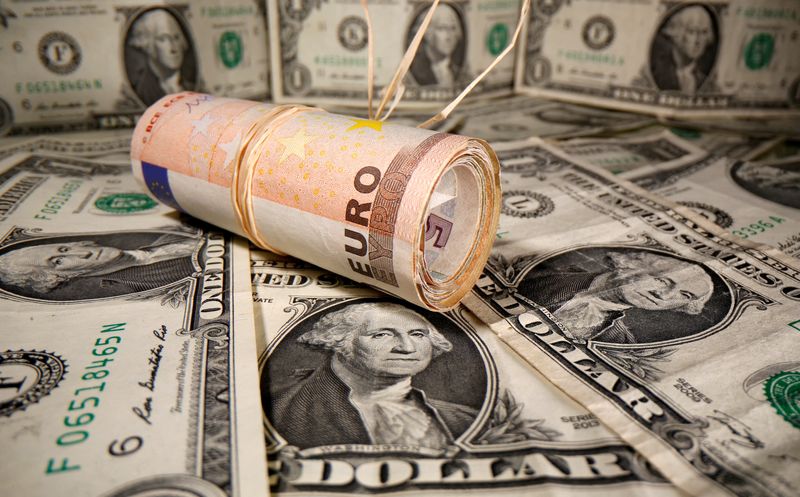Select Language

By Gertrude Chavez-Dreyfuss
NEW YORK (Reuters) -The euro ascended to four-month highs on Wednesday against the U.S. dollar, as Europe’s growth prospects improved after Germany’s proposed 500 billion euro ($531 billion) infrastructure fund, potentially offsetting global trade tensions.
The greenback, on the other hand, fell against most currencies, weighed down by an uncertain growth outlook driven by fears about the impact of tariffs on inflation and the economy. Investors are now starting to price in the potential for outright U.S. contraction, with traders on the prediction market Kalshi currently implying a 42% chance of a U.S. recession this year.
"We are experiencing a change in sentiment when it comes to relying on American markets," said Juan Perez, director of trading, at Monex USA in Washington.
"If things are headed towards a restrictive protectionism, the financial system will start making adjustments and right now it seems shedding dollar positions is prudent. If tariffs and trade wars are perceived as negative on the American economy, we return to speculation over the chances for looser monetary policy."
The euro, meanwhile, climbed 4% this week, on track for its best week since November 2022, taking another leg higher after a late Tuesday announcement from the parties hoping to form Germany’s next government of the planned new fund and an overhaul of borrowing rules.
It rose to its highest since November 8 against the dollar and was last up 1.5% at $1.0791, on pace for its best daily gain since November 2023. The euro also gained against other currencies, including the British pound, the Japanese yen and the Swiss franc,.

